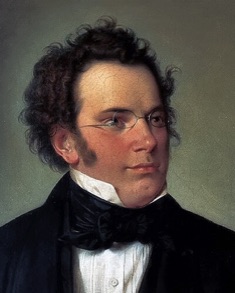Tom Poore © 2018. All rights reserved. Classical guitar lessons in Avon, Beachwood, Solon, South Euclid. Contact me at augustineregal@yahoo.com
But note grouping also can be conveyed not just through timing, but also through dynamics, vibrato, tone color—indeed, through any means or combination of means a player wants to employ:
Now let’s hear upbeat grouping applied to a snippet of melody:
For my taste, not enough guitarists pay sufficient attention to note grouping. Some guitarists apparently play for years without really considering which notes should be connected and which should be detached. The reason becomes clear when you realize that, for guitarists, breathing isn’t something we need to think about while playing. Oboe players, on the other hand, must constantly control their breathing. For them, knowing where to put a breath is a vital part of their musicianship—a breath in the wrong place can make the music sound disjointed. In fact, I would recommend that all guitarists who aspire to better musicianship should listen to good oboe players. Working with a good singer is another good idea. English guitar virtuoso Julian Bream said that only after working with tenor Peter Pears did he really understand phrasing.
Of course, there’s far more to this subject than just upbeat grouping. But my goal in this short article is to draw attention to how note grouping can energize a musical performance. As you apply this in your own playing, always remember that note grouping is about nuance. Done correctly, listeners should be aware that something is going on, but without quite knowing how it’s done. If listeners can hear the effort behind note grouping, then it’s being overdone. Also, there’s no formula for deciding where and how much note grouping to use. Different players can take this same concept and come up with entirely different performances. As in other aspects of musical interpretation, everything is influenced by the skill, taste, and imagination of the player.
Franz Schubert: Ländler, from D. 366
Now let’s hear an audio example of upbeat grouping applied to real music. (The recording is a trio in which I play all three parts.)
Schubert had a gift for writing simple, unpretentious works that are anything but simple-minded. Although this piece is deceptively easy at first hearing, it has quicksilver turns of harmony and mood that are the hallmarks of Schubert’s best music. A ländler (pronounced “lend-ler”) is a rustic dance in triple time. Popular in Europe during the early 19th century, it’s usually performed at a lively tempo and was the forerunner of the waltz.
Technically this is a fairly easy piece, and the predominant rhythm is a quarter note upbeat followed by a half note downbeat. But as you’ll hear, this apparently simple piece offers a wealth of possibilities in articulation and phrasing. In some places I’ve applied upbeat grouping in a subtle way, in other places I apply it more liberally. Listen, for example, to the passage beginning at 2:03, where I wanted a mincing quality, so I did an obvious upbeat grouping in all three parts. In contrast, at the da capo section (2:14) I wanted a more subdued mood, so what little grouping I do here is very slight. You might also notice that when I do portamento between two notes, it’s often on an upbeat. (Ornaments also can sound particularly good when played either on or right after an upbeat.)

Bear in mind that this kind of playing requires attentive hearing—people who listen passively are unlikely to notice it. But if you listen closely, you’ll notice how much my performance relies on upbeat grouping.
Franz Schubert (1797-1828)
Few concepts can raise the level of your playing more than an understanding of note grouping. And few concepts are more difficult to convey in writing. But I hope this short article will pique your interest in this intriguing subject.
Note grouping is a way of giving meaning to notes by accenting some and deemphasizing others. This idea has a long history. Baroque musicians sometimes talked about “good” and “bad” notes—the idea that some notes should be given more weight than others. Think of it like this. Consider the following sentence:
“What do you want?”
A simple question of only four words. But now consider the different shades of meaning you can get by emphasizing different words:
“WHAT do you want?”
“What DO you want?”
“What do YOU want?”
“What do you WANT?”
“WHAT DO YOU WANT?”
“WHAT...DO...YOU...WANT?”
The words themselves are unchanged, yet each new inflection subtly changes the meaning of the sentence. In fact, inflection alone can radically change the meaning:
“What! Do you want?”
While the analogy between language and music isn’t precise, it does tell us a bit about how a musical passage can change its meaning through how it’s inflected. Consider, for example, the following:
This is nothing more than a string of undifferentiated notes, and a literally minded player would play it that way. But a creative player might do something more interesting: emphasizing the last note in each measure, to give it a kick across the barline to the downbeat of the next measure:
This is what musicians call “upbeat grouping.” In upbeat grouping, the last beat of one measure is accented to sound like it’s driving toward the first beat of the next measure. How is this done? The textbook definition of note grouping typically says this is done by slightly altering the timing of certain notes. Here’s a visual illustration—notice that each third beat note is slightly delayed:


